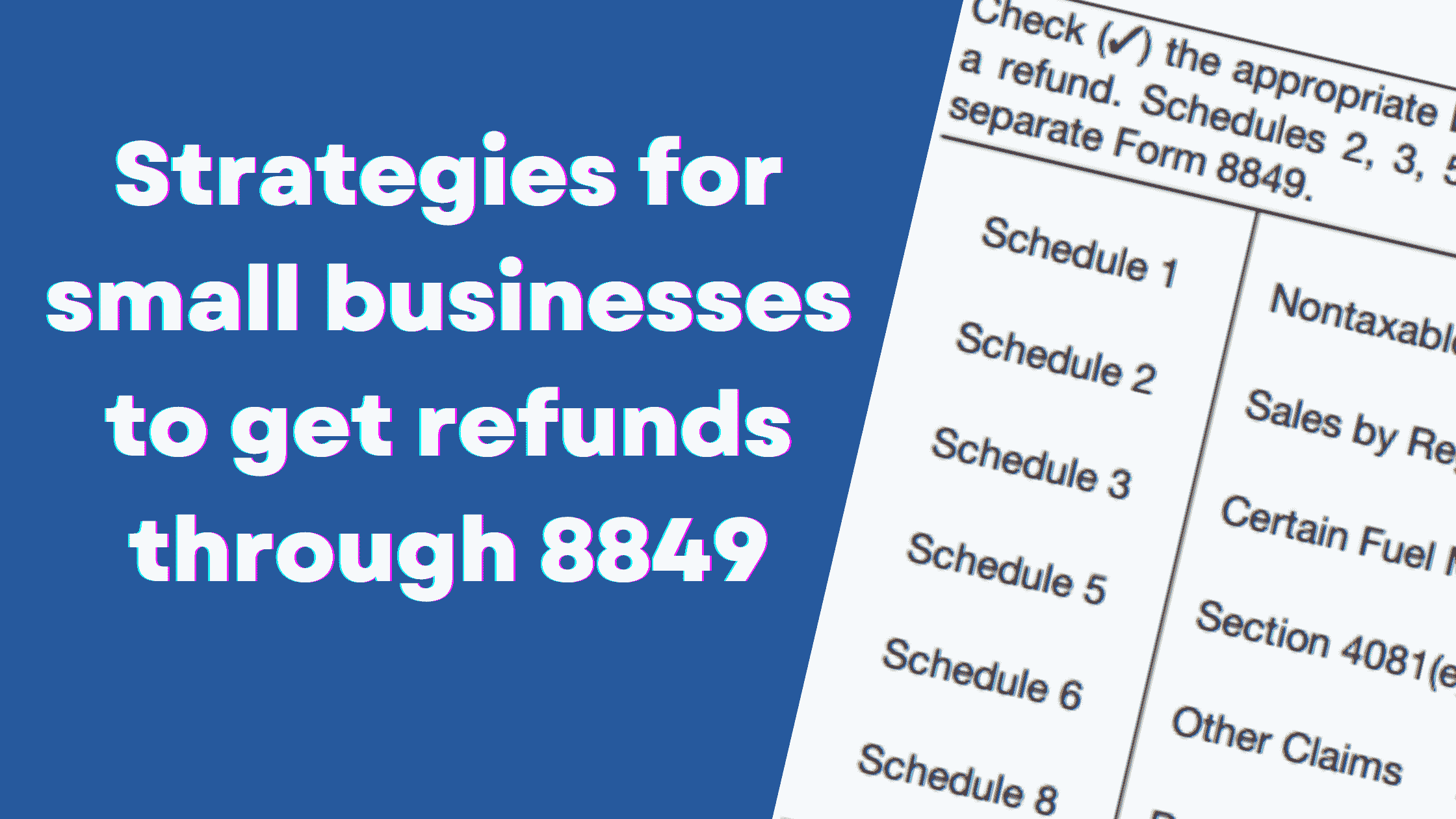
Strategies for small businesses to get refunds through 8849
Small businesses often face unique challenges in managing their finances. One avenue that can significantly impact their bottom line is Form 8849—a document that holds the key to claiming credits and refunds on certain excise taxes. In this blog, we'll explore how Form 8849 can make a difference for small businesses and provide strategies to ensure success in the process.
Understanding Form 8849
Form 8849, officially known as the Claim for Refund of Excise Taxes, is a vital IRS document that allows businesses to recoup certain excise tax payments. Small businesses, just like larger counterparts, can benefit from understanding the intricacies of this form. Essentially, it provides a pathway for businesses to recover money paid for specific excise taxes.
Identifying Eligibility
For small businesses to leverage Form 8849, it's crucial to identify eligibility criteria. Typically, businesses involved in activities such as fuel usage, environmental conservation, or specialized vehicles can be eligible for credits and refunds. Knowing when and how your business qualifies is the first step towards maximizing the benefits of Form 8849.
Types of Credits for Small Businesses
Small businesses can tap into a range of credits available on Form 8849, each tailored to specific activities and industries. Understanding these credits is crucial for maximizing the financial benefits for your business. Let's delve into the key types:
A. Fuel Tax Credits
One of the primary avenues for small businesses is fuel tax credits. If your business involves the use of fuel for activities such as transportation, agriculture, or construction, you may be eligible for significant credits. But fuel usage must have been used in a nontaxable use.
Strategy:
- Keep detailed records of fuel consumption for eligible activities.
- Understand the IRS 8849 schedule 1 for qualified uses of fuel to ensure accurate claims.
- Leverage fuel management systems to track fuel usage efficiently.
B. Alternative Fuel Credits
For businesses embracing alternative and environmentally friendly fuel sources, Form 8849 offers credits for the use of these alternatives. This includes fuels such as compressed natural gas (CNG), liquefied natural gas (LNG), and Liquefied petroleum gas(LPG).
Strategy:
- Identify alternative fuel sources that align with your business operations.
- Ensure your business vehicles or machinery are equipped to utilize these alternative fuels.
- Stay informed about changes in alternative fuel tax credits and adjust your strategy accordingly.
C. Environmental Conservation Credits
Small businesses engaged in activities that promote environmental conservation may qualify for specific credits. This can include initiatives like biodiesel or renewable diesel usage, which contribute to reduced carbon emissions. You can check out
Strategy:
- Evaluate your business practices to identify environmentally friendly initiatives.
- Investigate the potential use of biodiesel or renewable diesel in your operations by reading Form 8849 Schedule 3 to know more in detail.
- Document your commitment to environmental conservation through clear records.
Check out the blog on 10 Common Form 8849 Filing Mistakes to Avoid
D. Other Specialized Credits
Form 8849 also caters to businesses involved in certain specialized activities. Credits are available for industries like aviation, inland waterways, and even communication services. Identifying these niche credits can lead to additional financial benefits for small businesses in specific sectors. Read IRS form 8849 Schedule 2 to understand in detail.
Strategy:
- Research industry-specific credits applicable to your business.
- Engage with trade associations or industry groups to stay informed.
- Consult with tax professionals to ensure you are maximizing credits in specialized areas.
E. Carryforward and Carryback Provisions
In some cases, small businesses may not fully utilize their credits in a given tax year. Fortunately, Form 8849 includes provisions for carrying forward unused credits to future years or carrying them back to offset taxes paid in prior years. This flexibility allows businesses to optimize their tax benefits over time.
Strategy:
- Keep track of unused credits and their expiration timelines.
- Plan strategically to utilize carryforward or carryback provisions when applicable.
- Consult with IRS Authorized tax professionals for guidance on the most advantageous timing for credit utilization.
Conclusion:
Understanding the diverse range of credits available on Form 8849 empowers small businesses to claim their refunds smartly. By strategically leveraging these credits, businesses can not only reduce tax liabilities but also enhance their overall financial health.
Still, using paper for your claims? Move it to online today!
Claim your Excise Tax Refund
